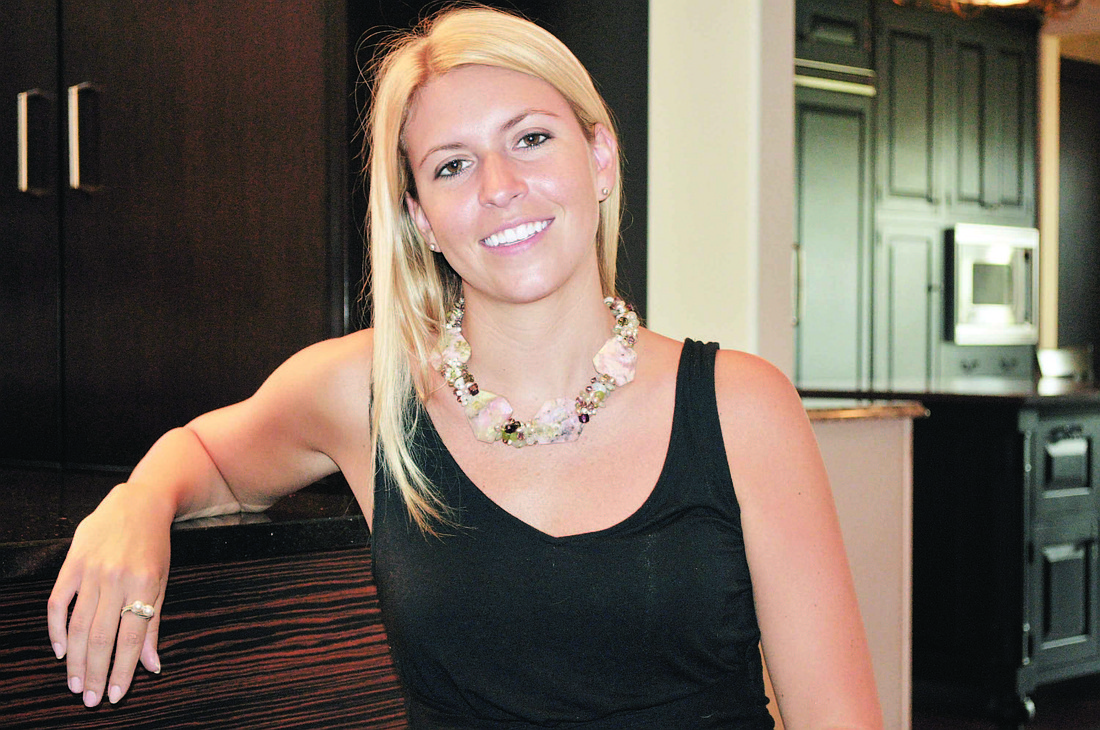- April 23, 2024
-
-
Loading

Loading

It doesn’t matter where Kimberly Frimel goes — the pool, the grocery store, the mall, on vacation — someone always wants to know where she bought her bling. And, although countless times people have started rattling off a list of possible stores, you’ll still never catch her running through the street screaming, “I make my own jewelry!” She’s way too subtle for that.
Frimel has become so accustomed to creating her own wearable art that she’s almost forgotten what fashions, or lack thereof, adorned her wrists, fingers and neck before she found solitude in creating her own pieces. Small chain necklaces seem vaguely familiar, but she didn’t spend much time on jewelry until about 11 years ago.
“I learned how to do pretty much everything from my sisters, Kelly and Kristin,” Frimel says. “They have taken several different courses and artist residencies to learn techniques. I have been fortunate to have learned from them.”
Every time Frimel was home in St. Louis from Miami International University of Art and Design, where she majored in interior design, her sisters would teach her a new method of threading beads or encasing a stone with wire.
“I just always liked working with my hands,” she says. “It’s kind of a fun thing more than anything. I like bright colors and big, chunky, bold pieces. I’m not one for subtlety as far as jewelry.”
Although her sisters’ styles trend toward softer, earthier colors, Frimel puts a little more oomph into her own pieces.
“I think I’m flashier,” she says, opening a glass-topped jewelry case to reveal a tray of glitzy rings. “I put together more bedazzled, sparkly, rhinestone pieces and things that have an iridescent finish.”
The first time Frimel decided to go for the chunky effect, she got her hands on some large pink stones and finger-wove tiny seed beads in between, using a peyote stitch with a needle and thread.
“When I first started, what I made was very different — it wasn’t as fine-tuned as the pieces I make now,” Frimel says. “I think in college, I was exposed to a lot of people who were always into the arts, and I found inspiration that way.”
She prefers to have materials she can pick through. As far as beads go, she buys whatever catches her eye in bead stores, thrift shops or vintage shops. Her collection spans from crystals, pearls and quartz to vintage rhinestones and semi-precious stones. She buys metals for wire wrapping on wholesale websites.
“I’m always surrounded by colors and textures,” says Frimel, who is the director of lifestyle design for Paradise Homes — Extreme Remodelers. “I work with clients to assist them in selecting the exteriors and interiors of their homes — it’s a constant thought process to keep consistency throughout the home, but there’s an interesting challenge to achieving my clients’ design goals.”
When it comes to jewelry, she’s most happy letting the creative juices flow without too much restriction and making pieces bold and unusual. She designs custom pieces to an extent, but finds that when clients are too picky about a certain idea, it almost takes away the fun factor.
“I am able to create custom designs of any particular color, stone or type of style,” Frimel says. “My only request for custom pieces is that my customers still appreciate that each piece will come out different and unique. What I am creating is one-of-a-kind, wearable art.”
Threading techniques
Wire wrapping
“This is encasing the stone in wire, not necessarily stringing a bead,” Kimberly Frimel says. “Depending on the piece and how the wire is wrapped around the stone, it creates a custom design every time.”
Finger weaving
“I always find it interesting to mix color tones. I like a lot of contrast with materials, whether it’s sizing, going from opaque to iridescent or something dull versus something sparkly. Maybe that’s what makes it different — I don’t do subtle color changes.”
MATERIAL GIRL
Mozarkite
“I had a piece of mozarkite and a piece of amber, and the color tones worked. The piece is one of my personal favorites, because it has more of a sentimental value of not only been given to me by my sister, but it reminds me of home — it was mined in Missouri.”
Aquamarine
“This is one of my favorites. It’s a light blue-green and sometimes has an iridescent-type quality or reflectivity to it. It’s easy to work with and matches with a lot of other color tones.”
Pearls and rhinestones
“Pearls have that classic, timeless look. I don’t always use standard white pearls, because they come in so many colors. There’s a lot you can do with pearls, as far as making something more up-to-date or brighter versus traditional white pearls. I’m working on a piece now that is bronze, turquoise and purple. It has jewel tones and bronze all woven together.”
Contact Loren Mayo at [email protected].